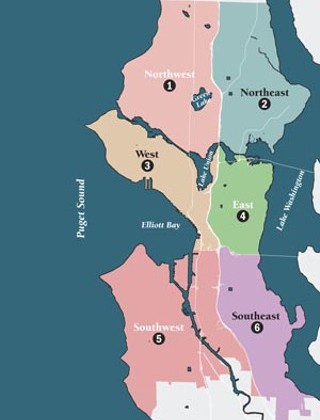How to HALA? Bring Back the Neighborhood Development Managers!
I wrote this e-mail to Councilmember Mike O’Brien back in March of 2014. The idea of bringing back the Neighborhood Development Manager (NDM) function has come up again and again in my conversation with neighbors I disagree with. Not just once, but many times. Neighbors are frustrated with what they often see as runaway growth.
When I worked at the Department of Neighborhoods our view was that we could all work together, City, neighbors, and developers, to realize the goals of neighborhood planning. In polls we’ve commissioned we’ve seen that people in the city feel growth is too fast and unplanned. They didn’t feel that way in the 90s because we had plans, 37 of them, and City staff assigned and empowered to fulfill them.
Can we go back? No. But we can bring back the idea that to grow together, we should collaborate on how we grow. We can do it. My plea to restore the NDM function has gone unheard. Perhaps now, with the HALA recommendations, we can get everyone to agree it’s time to bring it back to help sort through and implement the HALA recommendations and neighborhood plans.
—————————————–
Hello Councilmember O’Brien,
Thanks for being at our breakfast. We obviously will have lots to talk about on the specific legislative issues coming up. However, the discussion has taken me back a few years.
When [Mike] McGinn was first elected I advocated for the restoration of a Neighborhood Development Manager (NDM) function at the Department of Neighborhoods. He didn’t follow through with that whole train of thought.
I think we could get behind a similar City role. Many of our people run into City process that is frustrating and bewildering. As we both know, that isn’t because people at the City are bad, it’s that they don’t have a reference point outside of their silo. Their job is water hook ups, for example, they can’t solve a broader issue that involves other departments or even other property owners.
When Phil Fuji, Sally Clark, and I were NDMs we were empowered to bring departments together along with private developers andneighborhood groups to tackle problems or find mutually beneficial solutions. I think we did a pretty good job.
But it only lasted a couple of years, then [Mayor Greg] Nickels shut it down.
I think a similar role reconstituted somewhere in the City would go a long way toward addressing the points you raised about people worried about change. Builders and developers and neighborhoods might benefit from a problem solver being paid by the City at a wage to try and serve the public good by bringing people together rather than paid advocates or people pushing one side or another.
We were never arbitrators; nor did we have supervisory authority over other department staff. Departments sought us out to do the difficult work of bridging between departments, developers, private businesses, and neighborhoods. The Departments also new they had a charge from Mayor and Council to cooperate with us to get to a solution.
Will this make [the conflict] go away? Probably not. But it sure would be nice to have someone at the City who could play this role again. Frankly, our people don’t have time to romance the neighborhood people and that’s not their skill. And neighborhoods sometimes need someone to talk to that will help them figure out what their options are before they call an attorney or start a petition.
I remember a tussle with the school district in West Seattle that led to a hearing examiner challenge of a school field renovation. It was really ugly. But everyone was talking and I was able to keep that going because sometimes they’d gripe at me rather than at or about each other. I’m no diplomat; it was the role I played that mattered, and I think we came away with both sides able to work with each other even after an annoying appeal process.
Let me know if you want to talk more about this idea. You know that my patience has run out with the petition signing and litigious gangs of neighbors out their trying to stymie growth (my bias, of course). But you could really fill the leadership void left by Jim Diers if you figured out a way to divert a lot of the angst and frustration into something positive — not a lot of process, but solutions. Maybe we could get back to “how do we grow” rather than “whether we grow” conversations.
Thanks again for doing the challenging job you’ve got to do!


